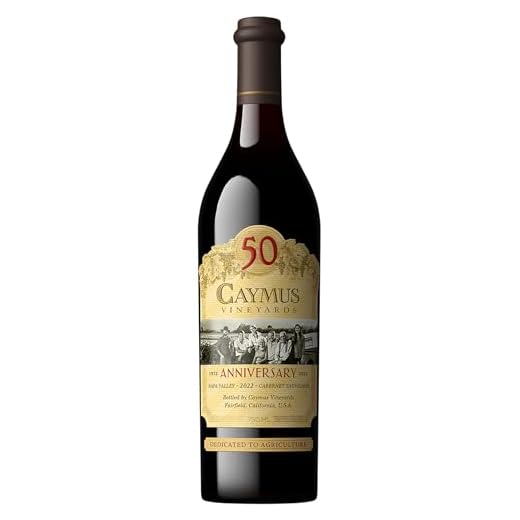



For those monitoring their carbohydrate intake, it’s crucial to know that certain varieties of fermented grape beverages have minimal sugars. Typically, a standard serving of this type of beverage holds approximately 3 to 4 grams of sugar, translating to a low carbohydrate profile–especially when compared to other alcoholic options.
When selecting a bottle, opt for dry varieties, as they generally exhibit lower residual sugars. On the other hand, sweet or dessert types can substantially increase the carbohydrate count, sometimes exceeding 10 grams per serving. Therefore, if you favor a lower carb option, focus on dry selections.
In addition to sugar levels, consider the serving size; a standard glass is around 5 ounces. This measurement plays a significant role in your overall carbohydrate consumption. Always check the label or ask for information regarding specific options if you’re dining out to ensure you stay within your desired limits.
Carbohydrate Content in Red Grape Beverage
Typically, a standard serving of this fermented drink has approximately 3-4 grams of sugars. The majority of these sugars transform during fermentation, resulting in a low carbohydrate level. Most varieties feature around 0.5 to 1 gram of net carbohydrates per ounce.
Factors Influencing Sugar Levels
Several factors influence the sweetness and carbohydrate profile:
- Varietal: Different grape types yield distinct sugar concentrations.
- Region: Climate and terroir can affect ripeness and sugar levels.
- Vinification Techniques: Methods, such as extended skin contact or residual sugar addition, impact sweetness.
Recommendations for Consumption
If monitoring carbohydrate intake, consider these points:
- Opt for dry varieties, which generally have lower residual sugars.
- Check labels for nutritional information, as some producers provide detailed content.
- Moderation is key; enjoy responsibly to maintain a balanced diet.
Understanding the Sugar Content in Red Wine
The sugar levels in a glass of wine can significantly influence its taste and caloric content. Most varieties possess residual sugars, which can vary widely. On average, a typical glass may contain anywhere from 0.5 to 2 grams of sugar per ounce, with some sweeter styles reaching higher levels.
Factors Influencing Sugar Levels
The grape variety, climate, and winemaking techniques all play pivotal roles in determining sugar content. For instance, grapes harvested later in the season often have higher sugar concentrations due to prolonged exposure to sunlight. Additionally, fermentation processes can affect how much sugar remains in the final product. Wines that undergo malolactic fermentation tend to have a creamier texture, which can influence the perception of sweetness.
Choosing Wisely
If you’re mindful of sugar intake, consider selecting drier options, as these typically have lower residual sugar. Wines labeled as “dry” usually have less than 1 gram of sugar per glass, making them a suitable choice for those monitoring their sugar consumption. Always check the labels or consult with a knowledgeable source to find the best options that align with your dietary preferences.
How Many Carbs Are in a Glass of Red Wine?
A typical serving of a 5-ounce glass of this beverage usually contains around 3 to 4 grams of carbohydrates. This amount can vary slightly depending on the specific variety and production method used, but most dry options fall within this range. For instance, Cabernet Sauvignon and Merlot are generally lower in sugars compared to sweeter varieties like Zinfandel or Lambrusco, which may have up to 8 grams per serving.
Impact on Daily Intake
If you’re monitoring your carbohydrate consumption, it’s important to consider these figures in the context of your overall diet. A glass of this drink can fit well within a moderate carbohydrate plan. However, individuals on stricter low-carb diets may want to limit their intake or choose drier styles to minimize carbohydrate consumption.
Choosing Wisely
Selecting a low-sugar option can enhance your experience without significantly impacting your carbohydrate intake. Look for wines labeled as “dry,” as these typically have the least residual sugar. Reading labels or consulting with a knowledgeable vendor can also help in making informed choices.
The Impact of Dry vs. Sweet Red Wines on Carbohydrate Levels
Opt for dry varieties if you aim to minimize sugar intake. These options typically have lower residual sugars, translating to fewer carbohydrates per glass.
Understanding the Differences
Sweet selections are crafted with higher sugar content, resulting in an elevated carbohydrate count. In contrast, dry selections undergo fermentation that converts most of the sugars into alcohol, leading to reduced levels of carbohydrates. Here’s a breakdown:
- Dry Wines: Generally contain 0.5 to 1.5 grams of sugar per serving, resulting in approximately 2 to 4 grams of total carbohydrates.
- Sweet Wines: Can have 5 to 20 grams of sugar per serving, often leading to 10 to 30 grams of total carbohydrates.
Choosing Wisely
When selecting a bottle, scrutinize the label for terms like “dry,” “off-dry,” or “sweet.” If you’re monitoring carbohydrate intake, consider these tips:
- Prioritize dry varieties such as Cabernet Sauvignon or Merlot.
- Avoid dessert wines, which are typically high in sugar.
- Check for specific brands known for lower residual sugar content.
Ultimately, the choice between dry and sweet options can significantly impact your carbohydrate consumption, so select wisely based on your dietary needs.
Comparing Carbohydrate Levels in Various Alcoholic Beverages
When assessing carbohydrate levels, it’s essential to consider how different alcoholic options stack up against each other. A standard serving of most spirits, such as vodka, gin, or whiskey, typically has zero grams of carbohydrates. This makes them a popular choice for those monitoring their carb intake.
On the other hand, beers vary widely in carbohydrate content. Light beers usually contain around 3-7 grams per 12 ounces, while regular beers can have between 10-20 grams. The grain used in brewing contributes significantly to these numbers.
As for sparkling beverages, the carbohydrate content can fluctuate based on the brand and sweetness level. Dry sparkling options can have as little as 1-3 grams per glass, while sweeter varieties may exceed 10 grams.
In summary, when comparing carbohydrate levels, spirits are the best choice for low-carb diets, followed by dry sparkling options. Beers generally have higher carb content, particularly regular varieties. Understanding these differences aids in making informed choices based on dietary preferences.
Factors Affecting Carbohydrate Content in Wine
Several elements influence the amount of carbohydrates in a glass of this particular beverage. The primary factor is the grape variety used, as different grapes have varying levels of natural sugars. For instance, sweeter grape types typically yield higher residual sugar levels post-fermentation, leading to increased carbohydrate content.
Another significant aspect is the fermentation process. Winemakers can choose to ferment the juice fully or leave some sugar unfermented, which affects the final product’s sweetness and carbohydrate levels. Dry styles generally have less residual sugar compared to their sweeter counterparts.
The region where the grapes are grown also plays a role. Terroir, including climate, soil type, and vineyard practices, can impact grape ripeness and sugar accumulation. Warmer climates often produce riper grapes with higher sugar content, resulting in wines with more carbohydrates.
The winemaking technique further influences carbohydrate levels. Methods like malolactic fermentation can modify the wine’s texture and flavor profile, potentially affecting perceived sweetness and carbohydrate content. Additionally, additives such as sugar or sweeteners during production will also increase the carbohydrate count.
| Factor | Impact on Carbohydrate Content |
|---|---|
| Grape Variety | Different varieties have varying sugar levels |
| Fermentation Process | Full fermentation reduces residual sugars |
| Region | Climate and soil influence sugar accumulation |
| Winemaking Techniques | Specific methods can alter sweetness |
| Additives | Added sugars increase carbohydrate levels |
Finally, individual serving sizes can dramatically affect perceived carbohydrate intake. Larger pours can result in higher carbohydrate consumption, regardless of the wine’s inherent sugar content. Monitoring serving sizes will help maintain an accurate understanding of carbohydrate intake associated with your choices.
How to Choose Low-Carb Red Wine Options
Opt for varieties that are labeled as “dry.” These tend to have lower sugar and consequently fewer carbohydrates. Look for wines like Cabernet Sauvignon, Merlot, and Pinot Noir, which typically fit this profile.
Evaluate Alcohol Content
Higher alcohol content usually indicates lower residual sugar. Aim for selections with an alcohol percentage above 13.5%. This can signal a drier profile, reducing sugar levels and carb counts.
Check the Label
Seek out information regarding net carbs per serving. Some producers provide nutritional information, making it easier to make informed choices. If the label mentions “no added sugar” or “organic,” it often aligns with lower carbohydrate options.
Consider the region of origin; certain areas have regulations that influence sugar levels in their products. For example, wines from the Old World tend to be drier compared to New World counterparts, often resulting in lower carbohydrate content.
Lastly, trust your palate. Tasting different options can help identify your preferences, guiding you to selections that align with your dietary goals while still delivering on flavor.
Health Implications of Carbs in Red Wine for Dieters
For those managing their carbohydrate intake, selecting options with lower sugar levels is key. Generally, dry varieties offer fewer grams per serving than their sweeter counterparts. A standard glass of a dry selection typically contains around 3-4 grams, while sweeter types can reach upwards of 10 grams.
It’s essential to factor in how these sugars can impact overall daily allowances. For individuals adhering to a low-carb lifestyle, opting for dry varieties allows for occasional enjoyment without significant dietary disruption. Pairing these choices with meals rich in protein and healthy fats can also mitigate blood sugar spikes.
Monitoring serving sizes is crucial. Larger pours can quickly increase carbohydrate consumption. A standard serving size of 5 ounces is advisable for keeping intake manageable. Additionally, understanding the specific vineyard practices and fermentation processes can influence sugar levels in the final product.
When making informed choices, seeking out wines labeled as ‘dry’ or ‘low-sugar’ can be beneficial. Wine producers sometimes highlight these features on their labels, providing a clearer guide for dieters.
Lastly, for those looking to balance their lifestyle while enjoying a glass, consider pairing with foods that complement the flavors without adding excessive carbs. For example, savory dishes or lean proteins can harmonize nicely with a glass, enhancing the overall experience while maintaining dietary goals. For more culinary tips, check out this link: how long does it take to cook turkey tails.










